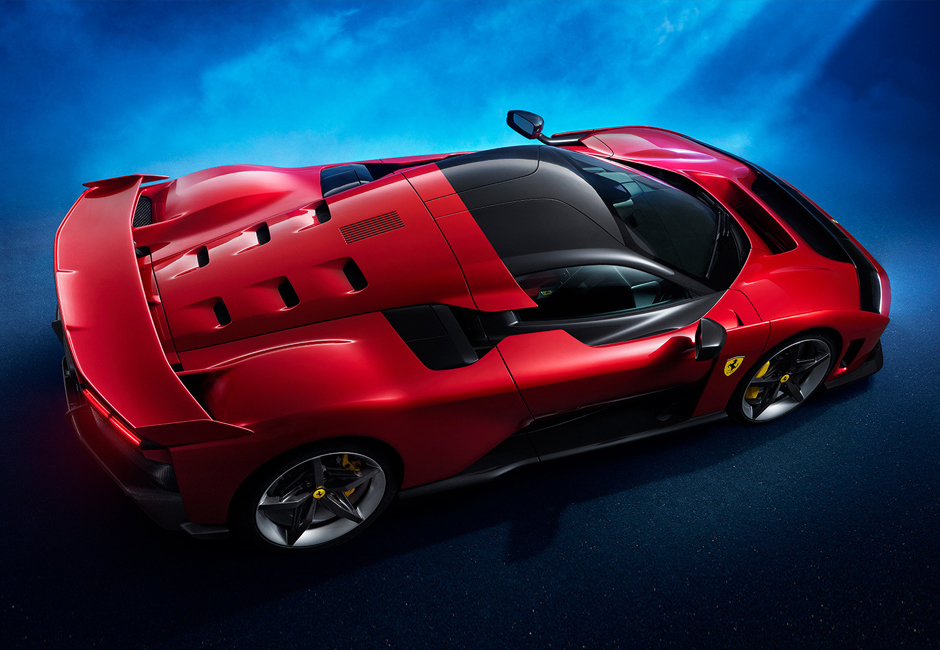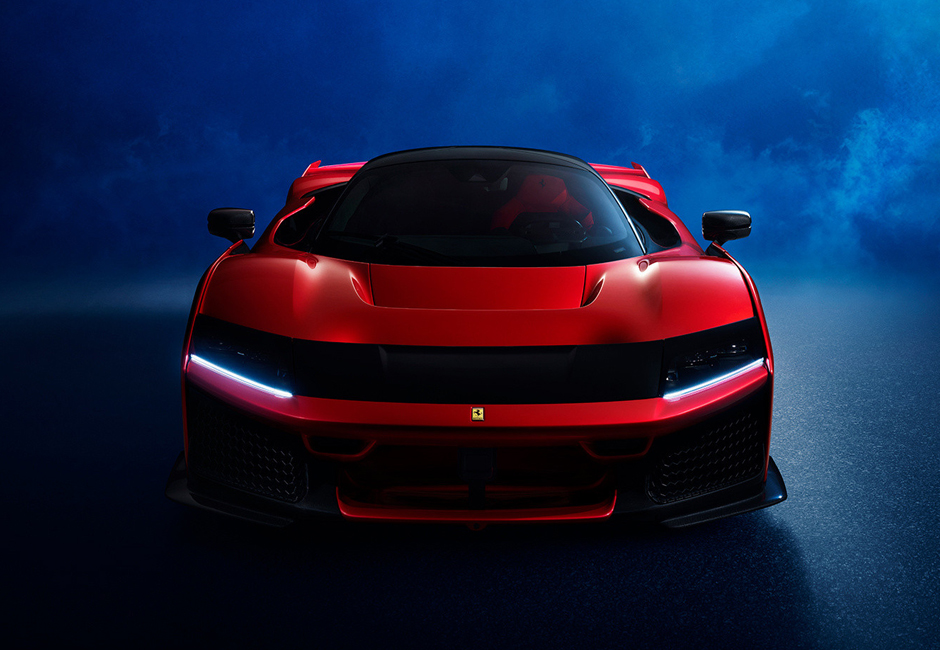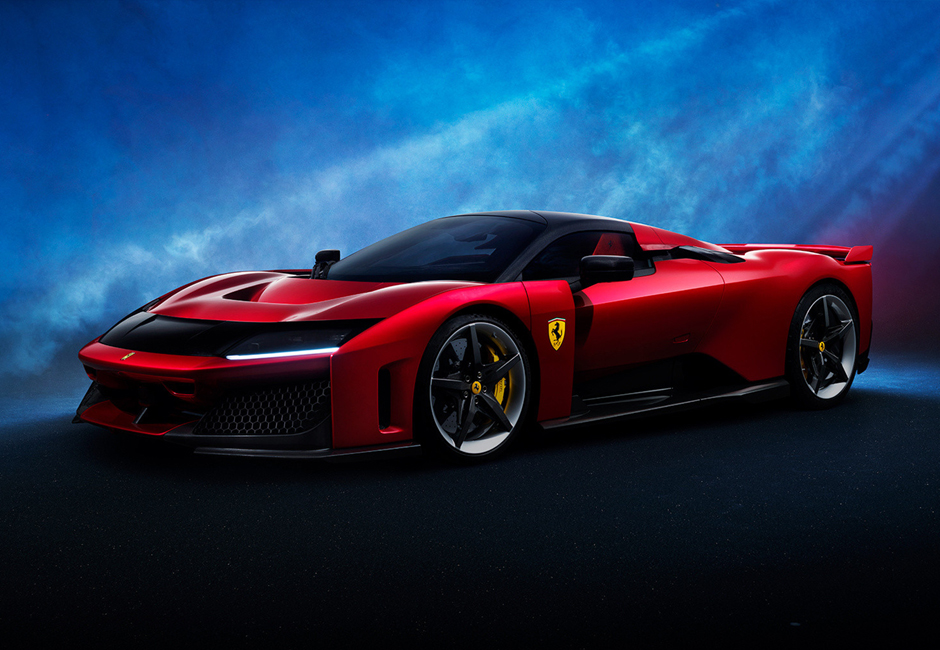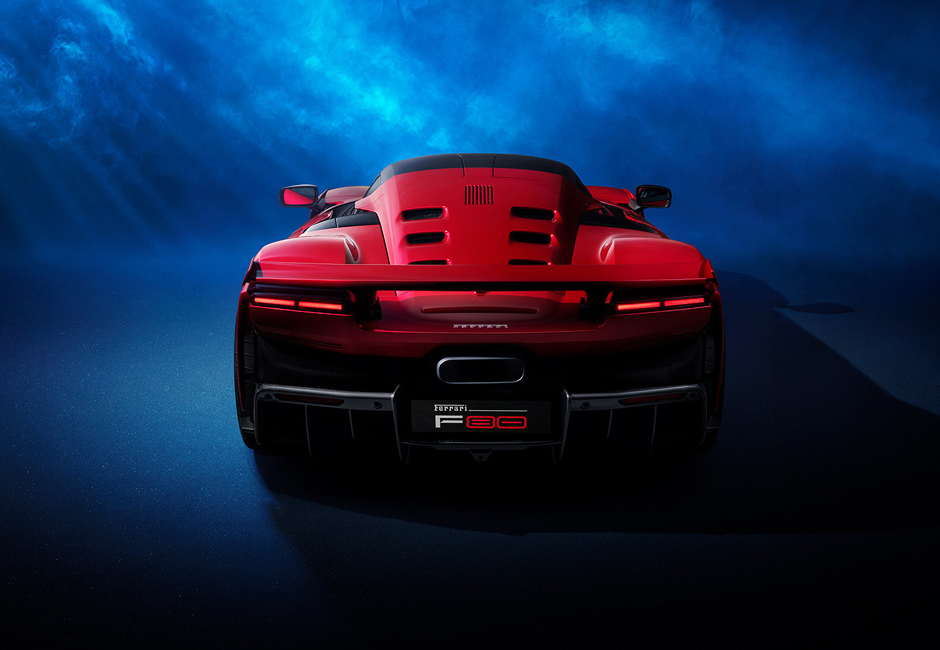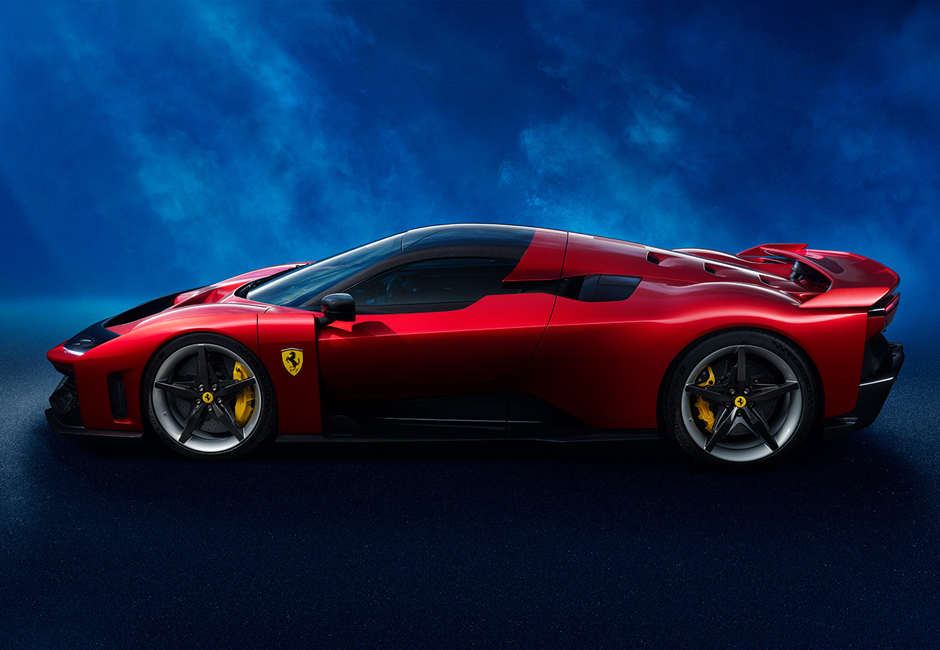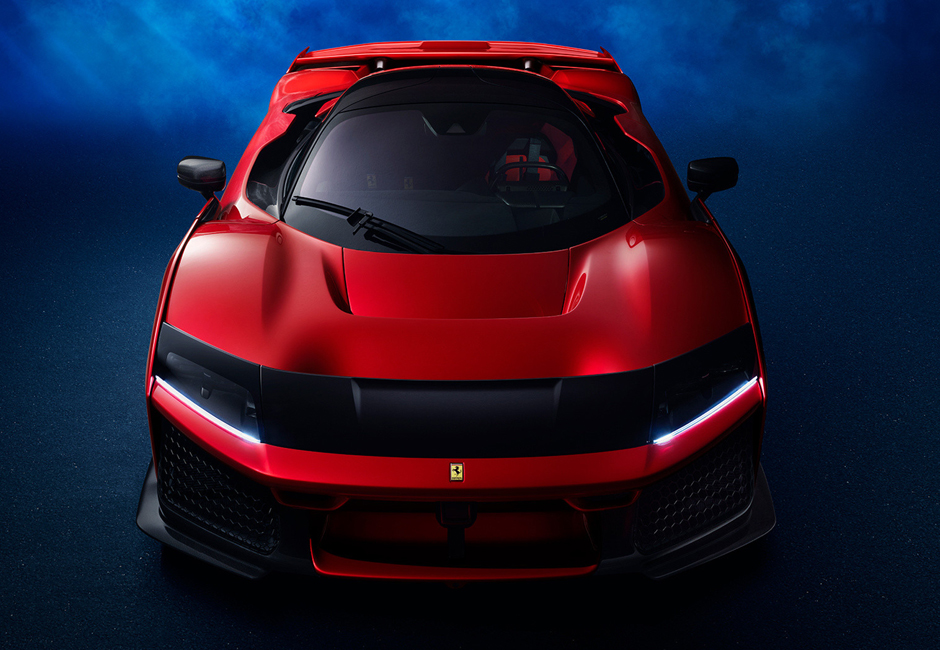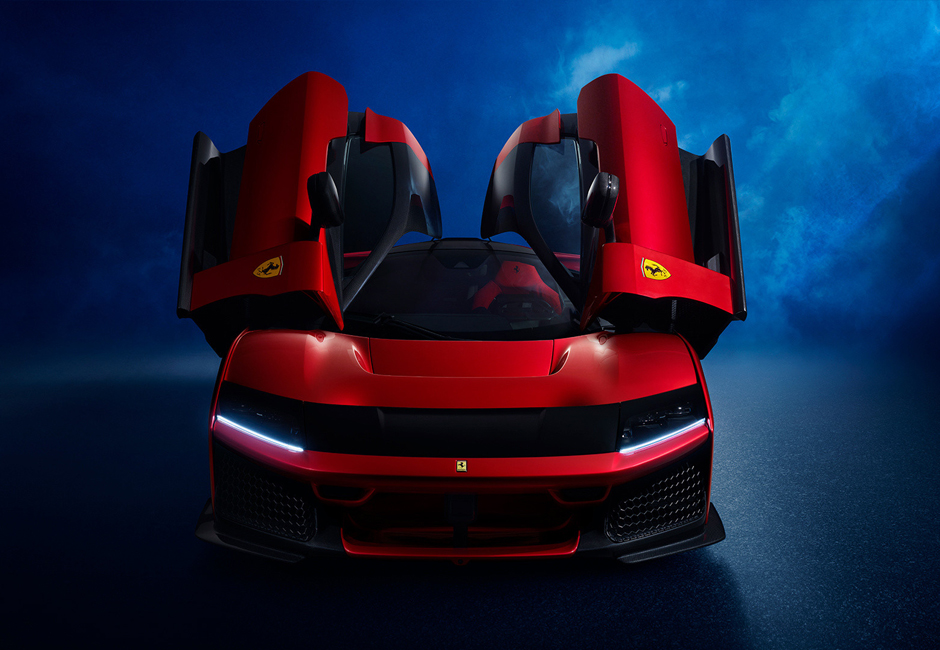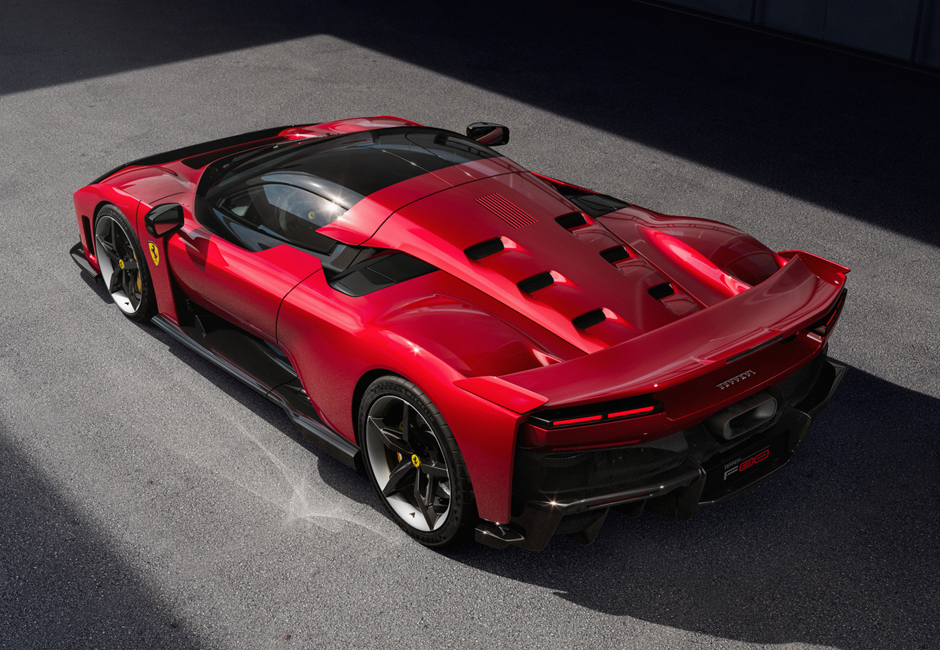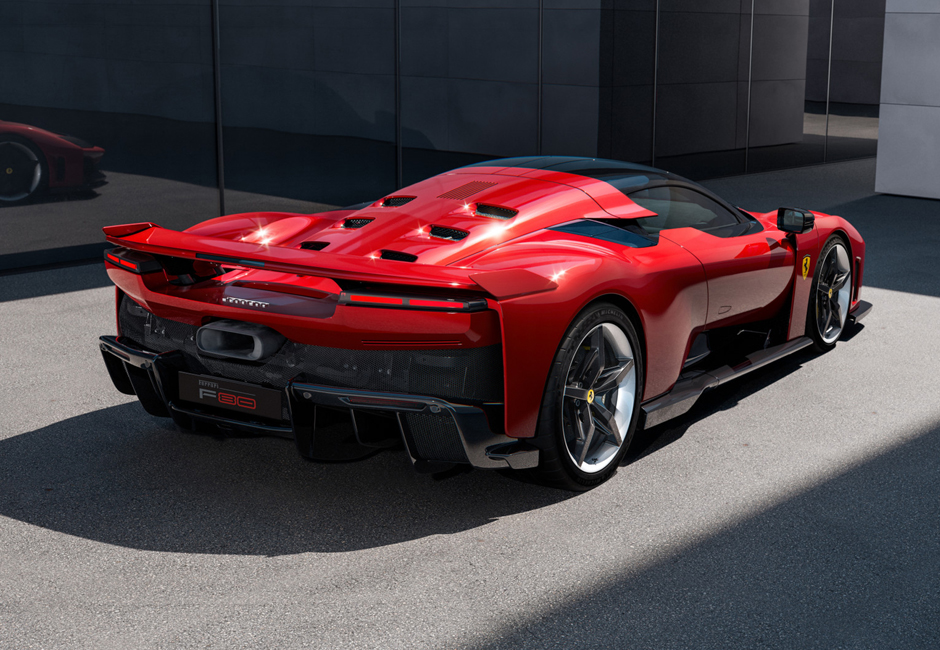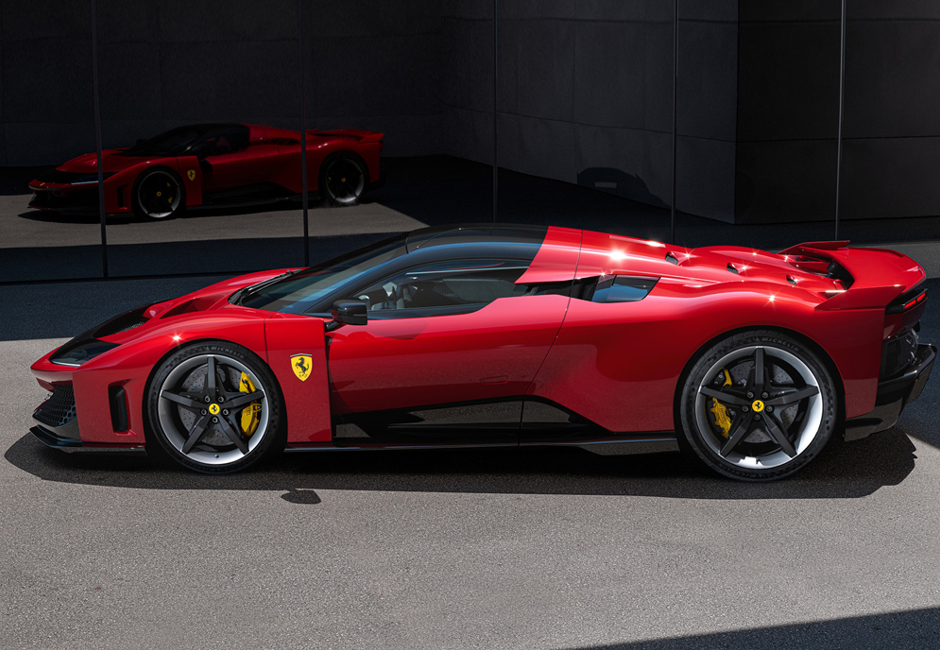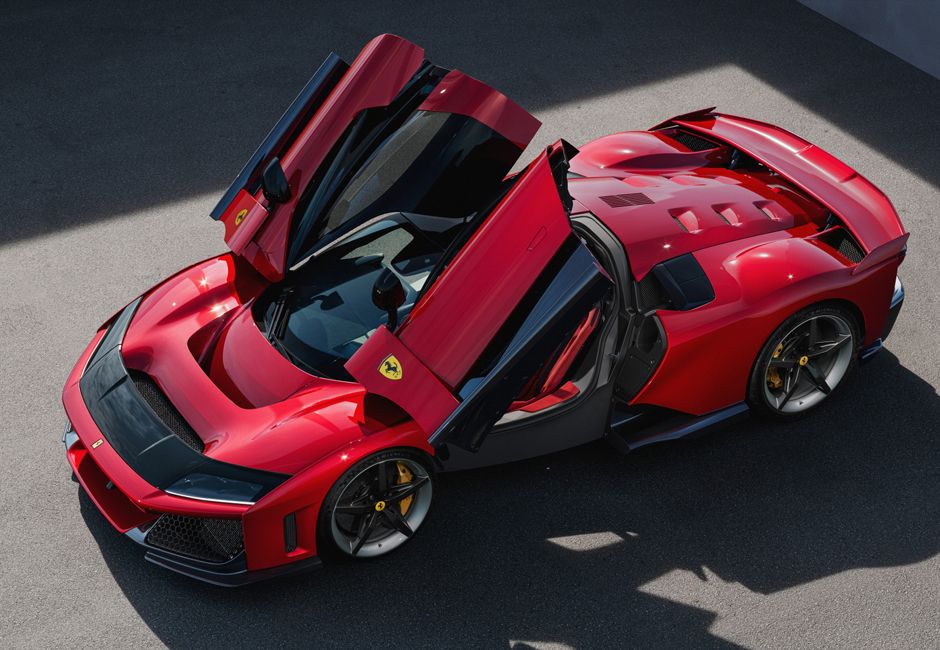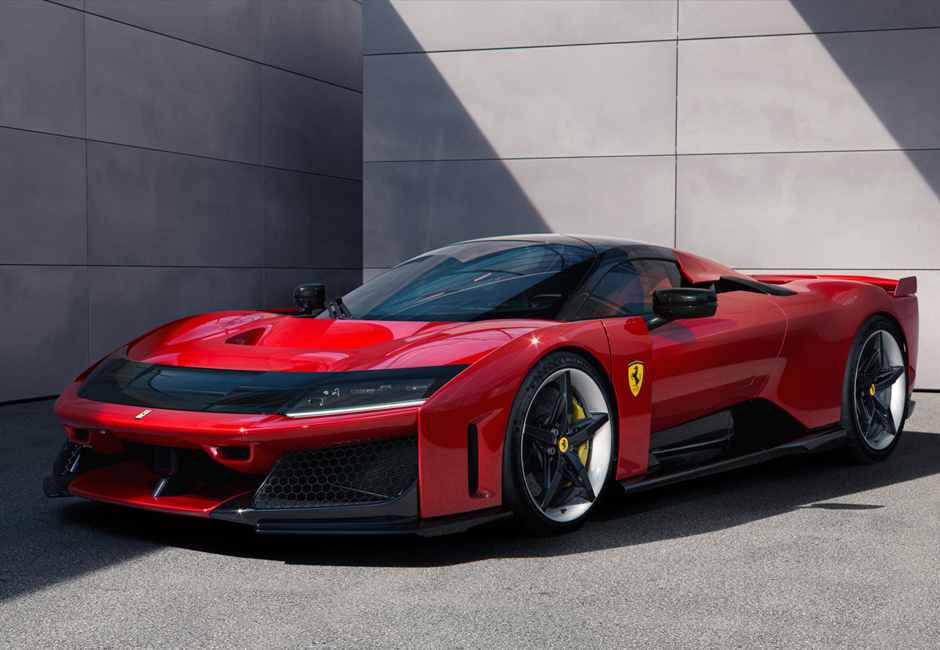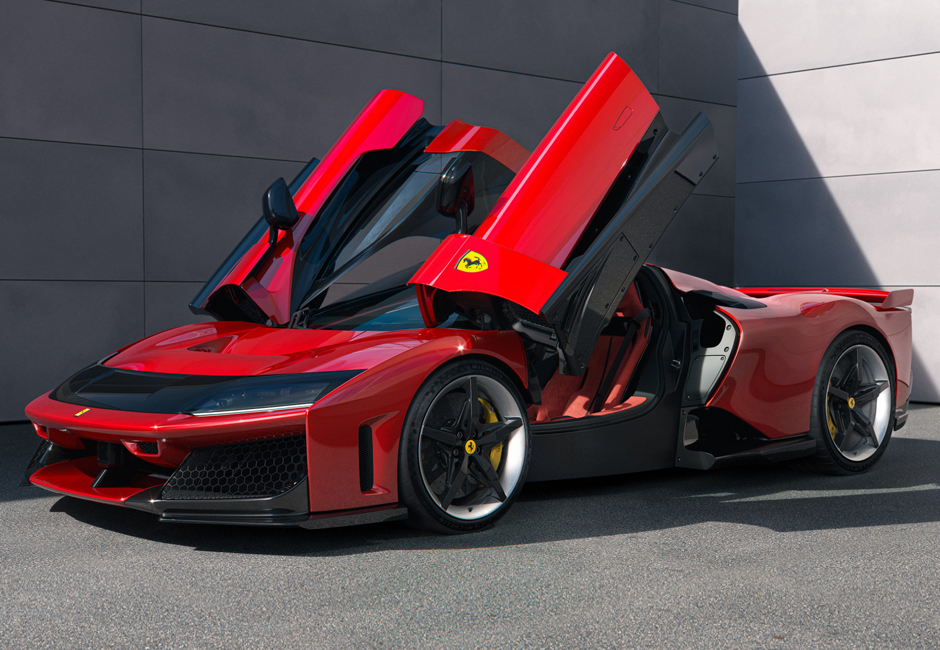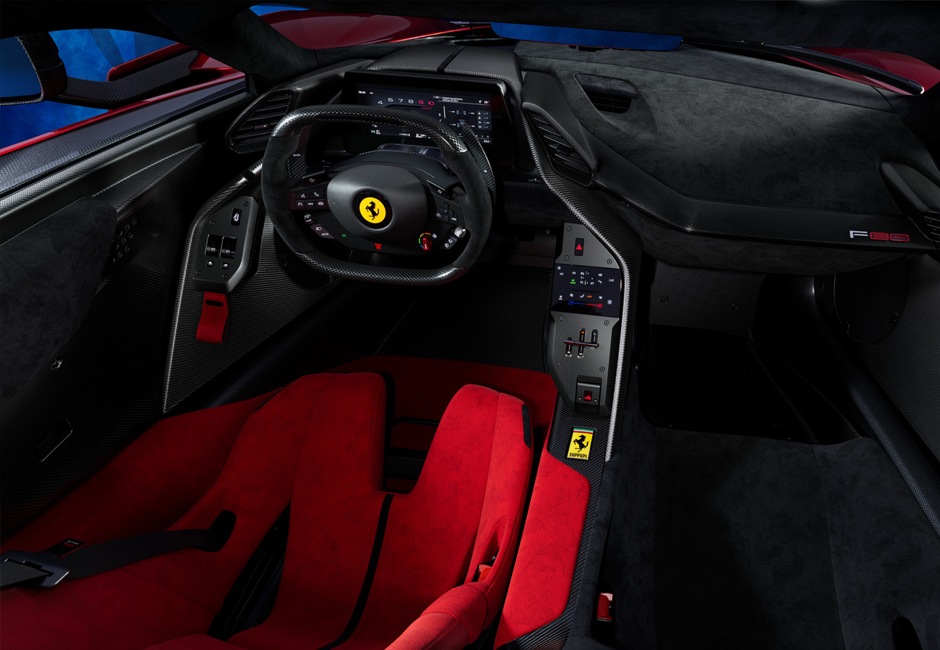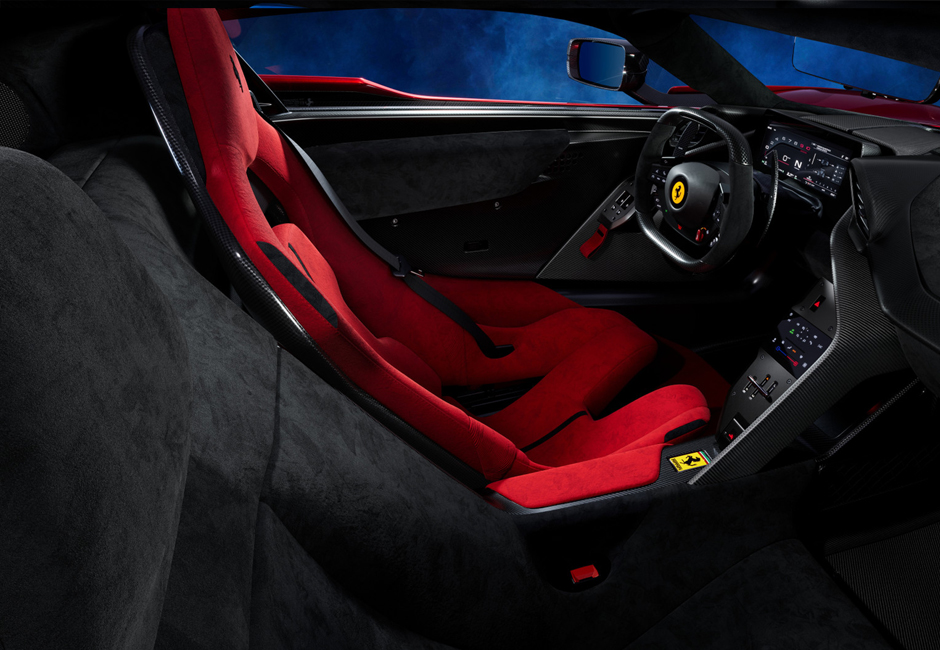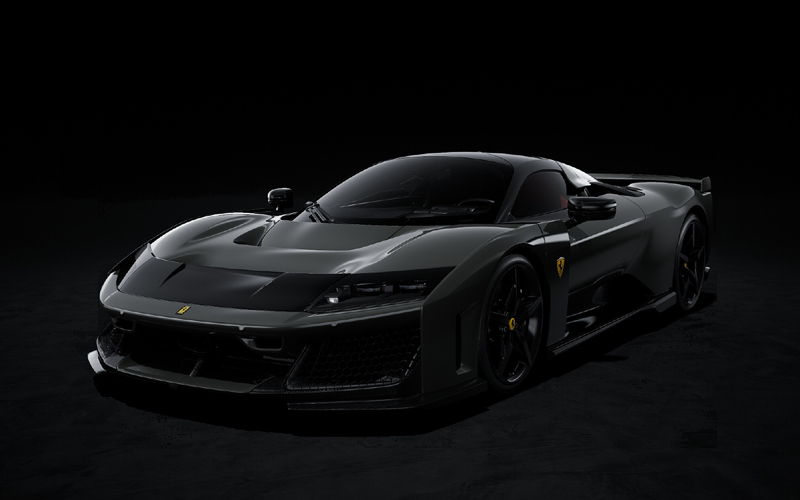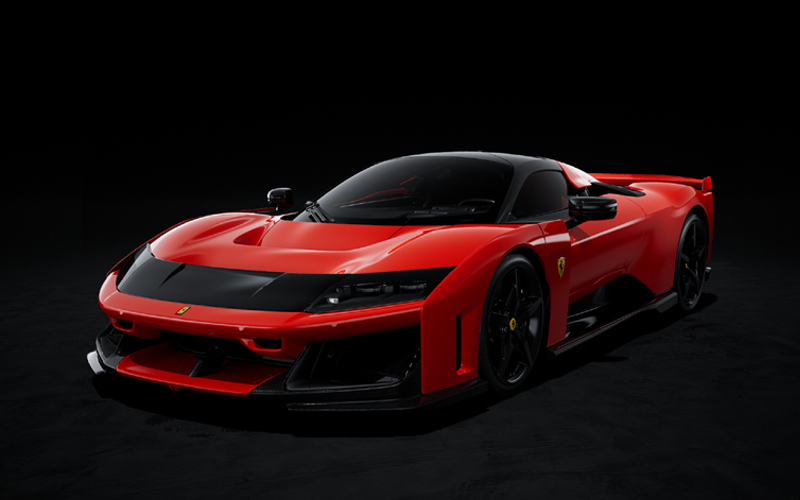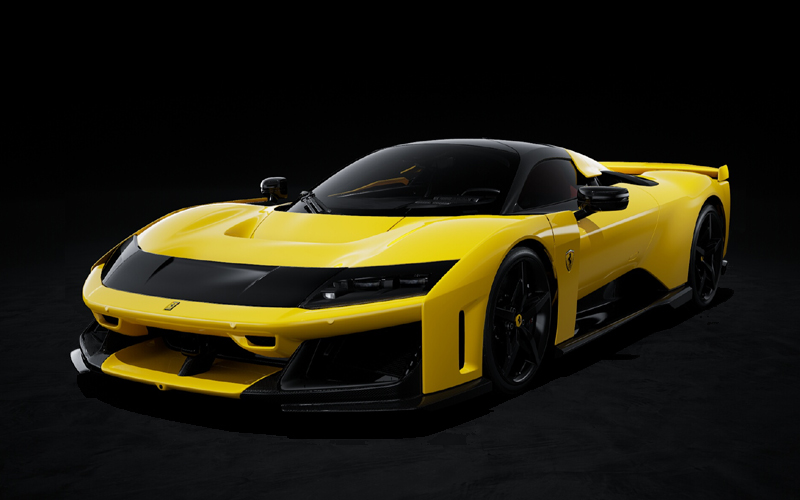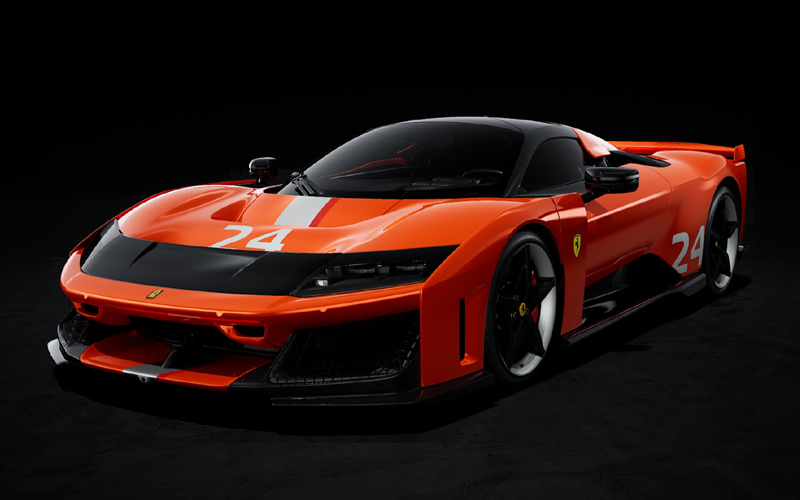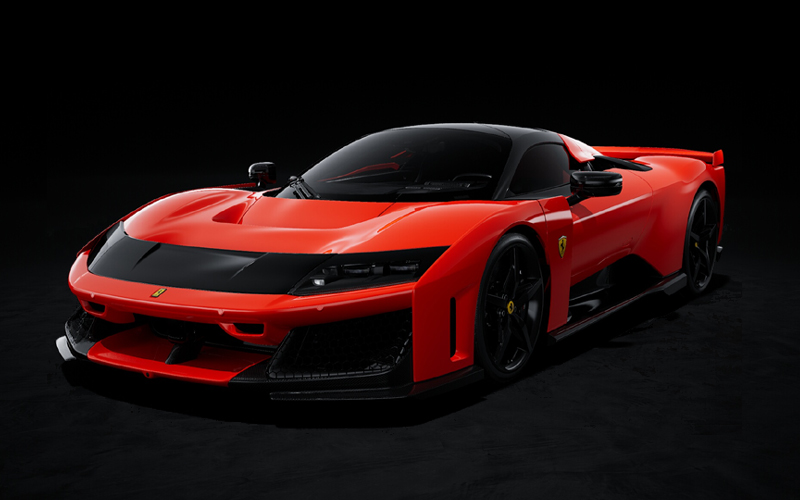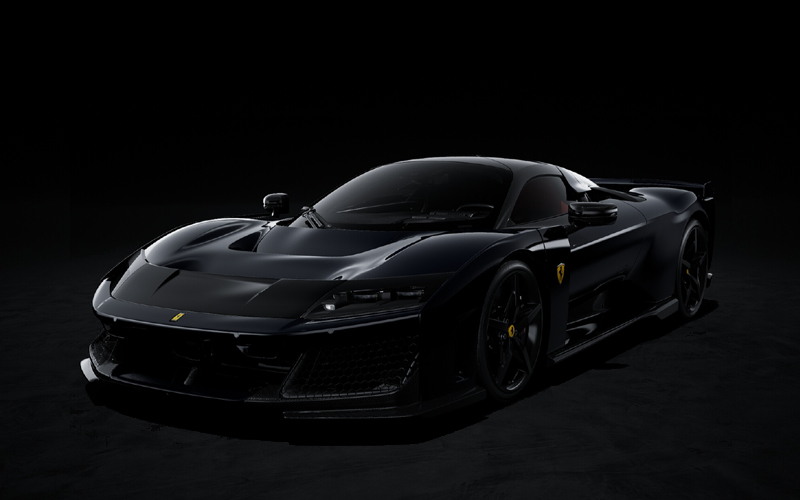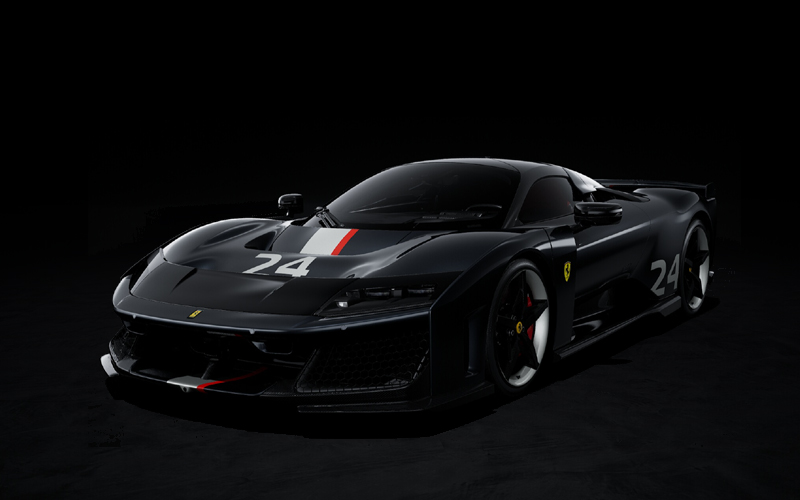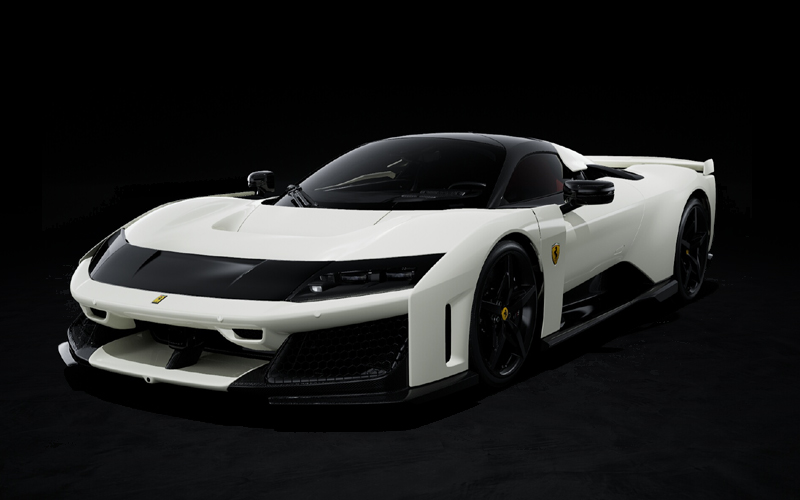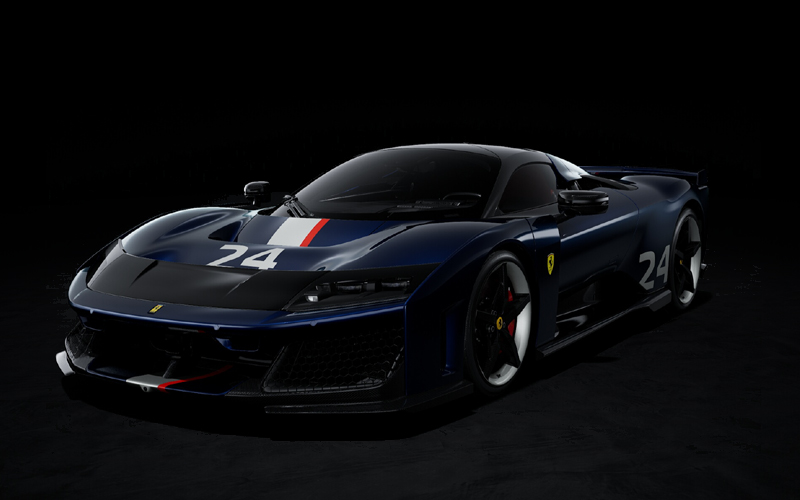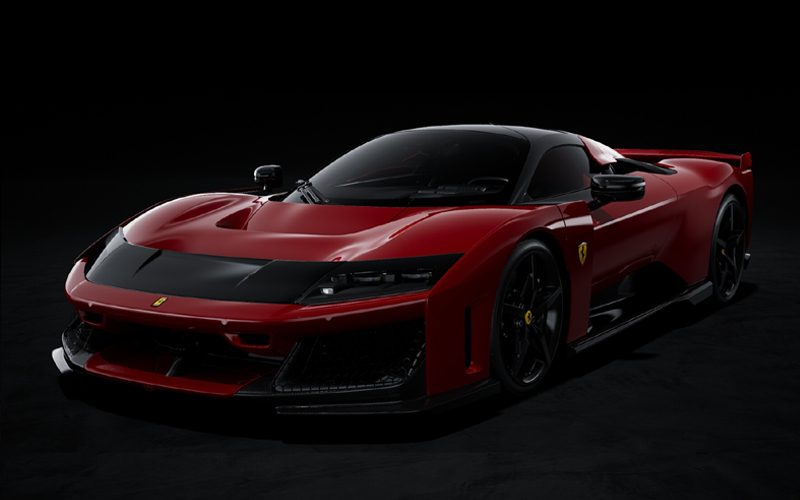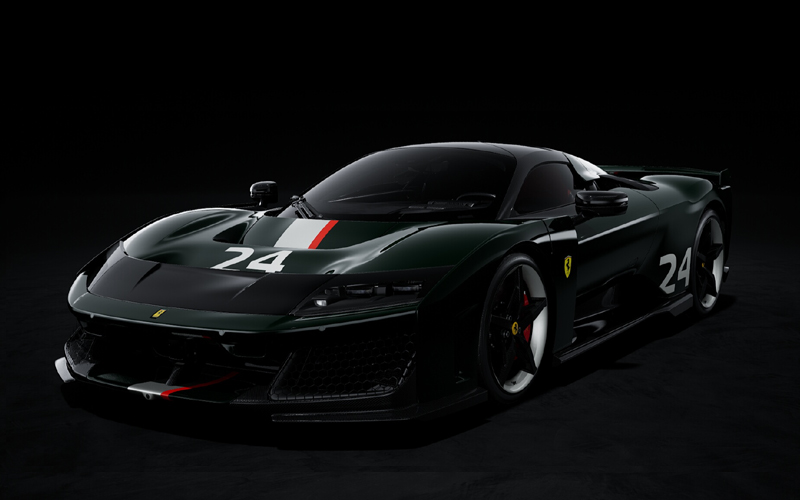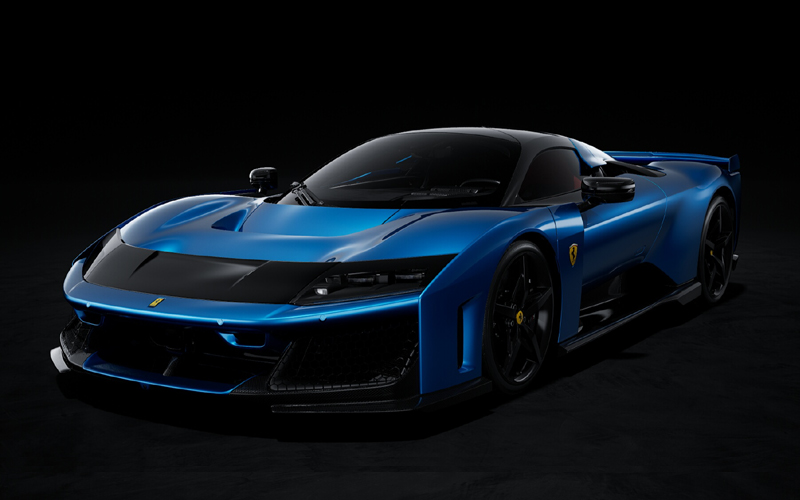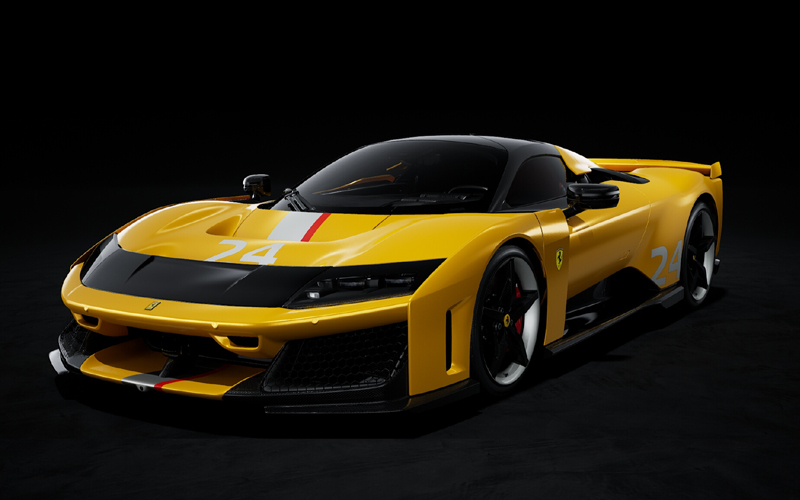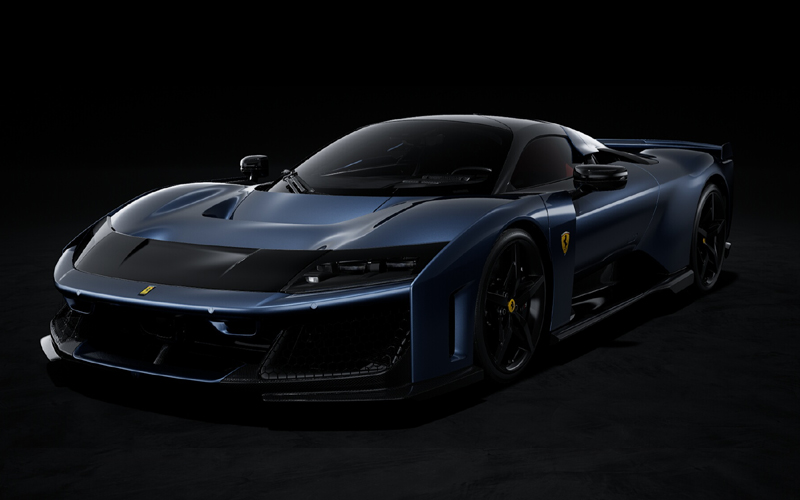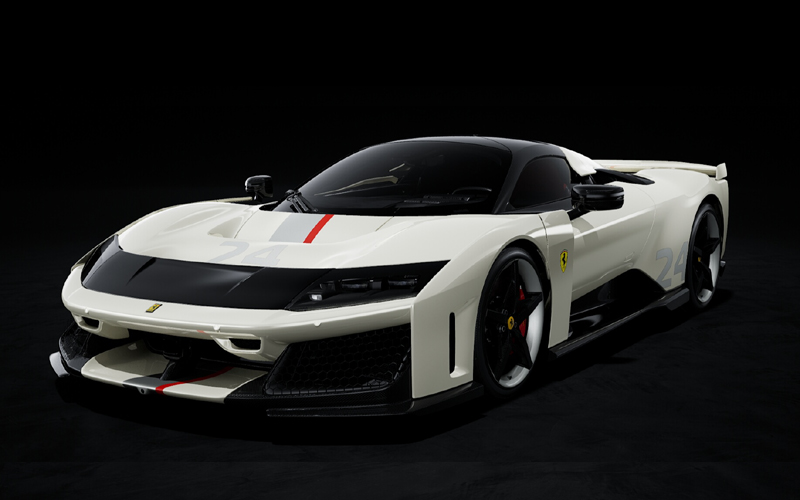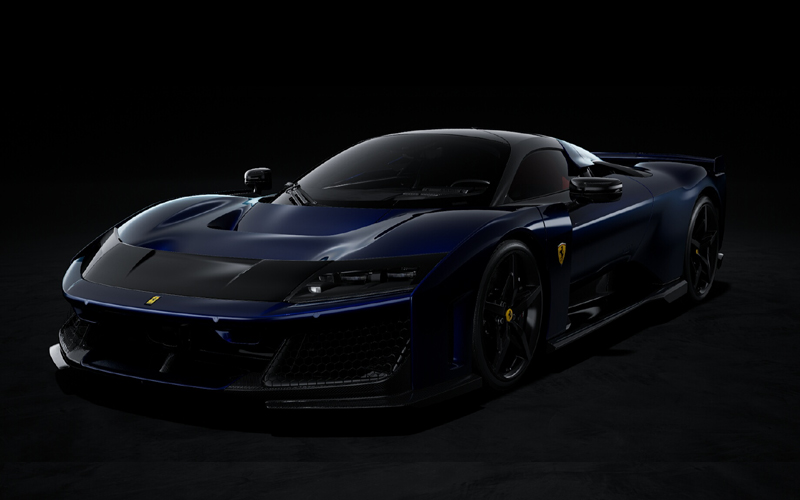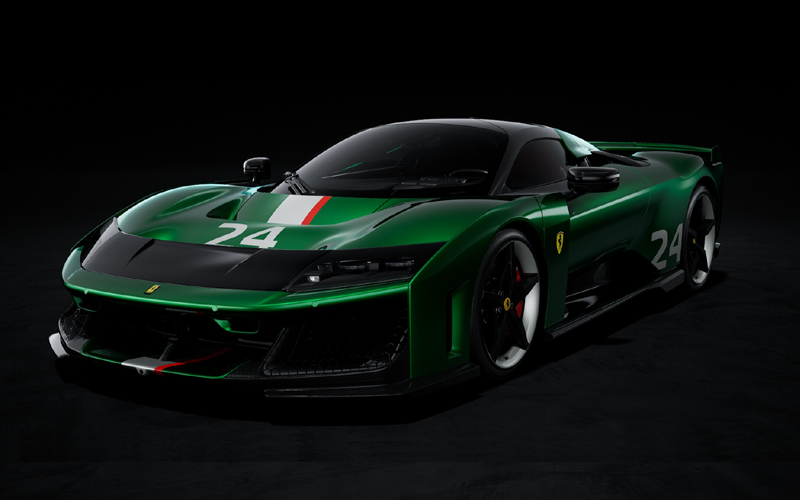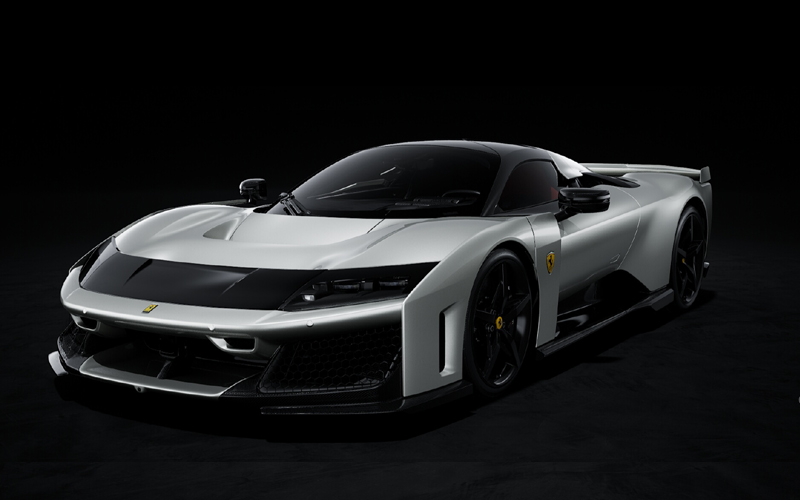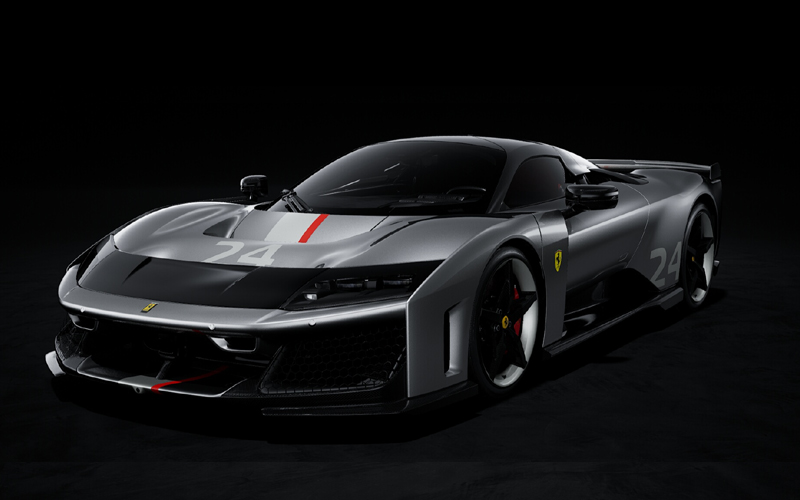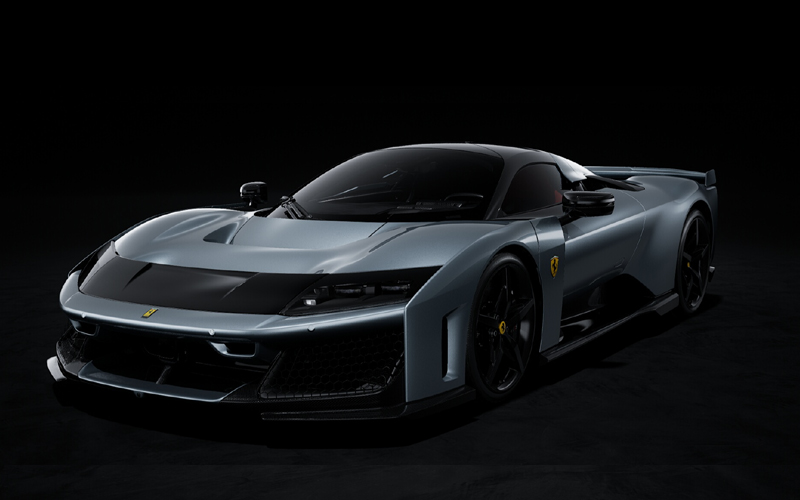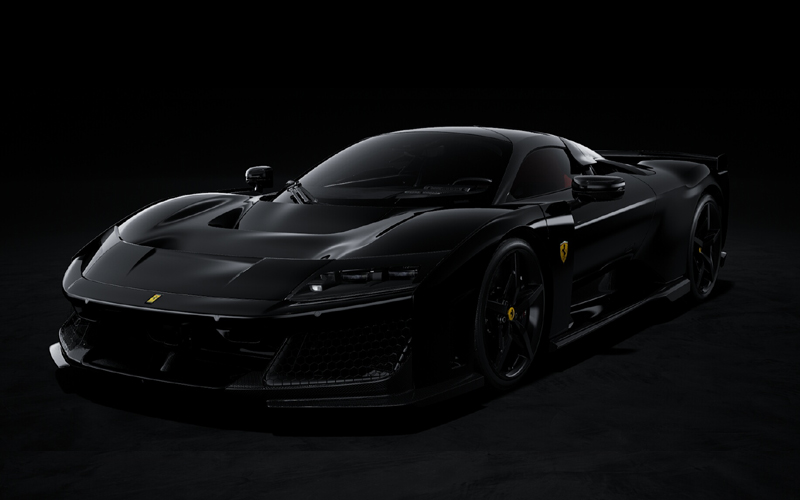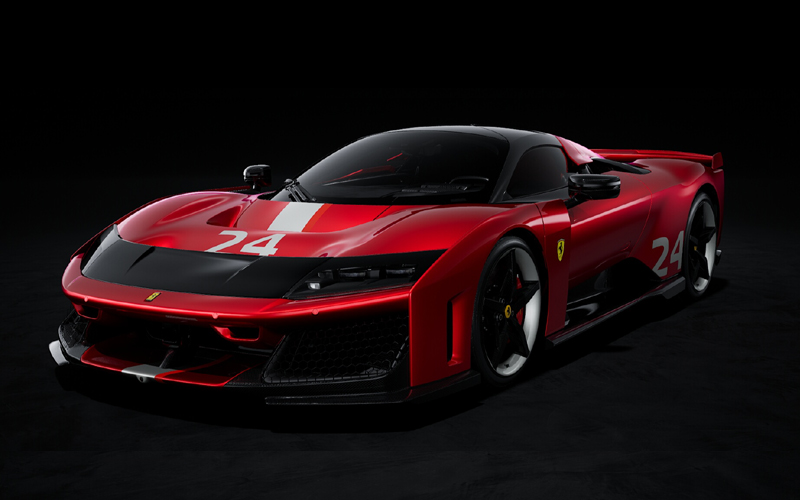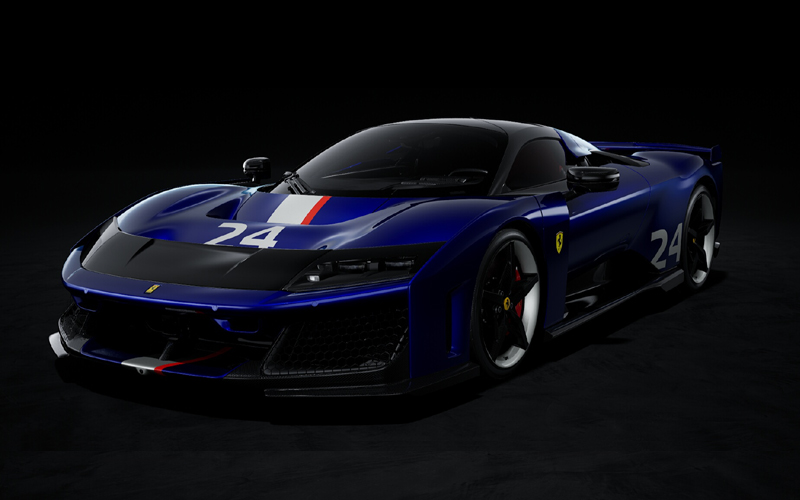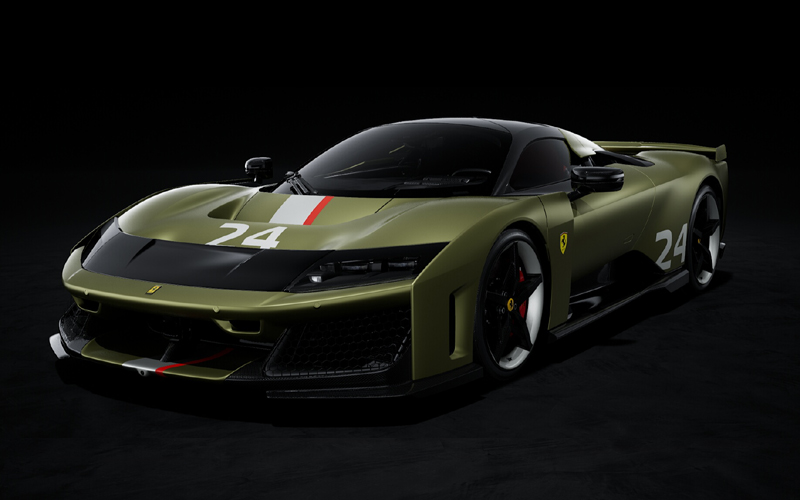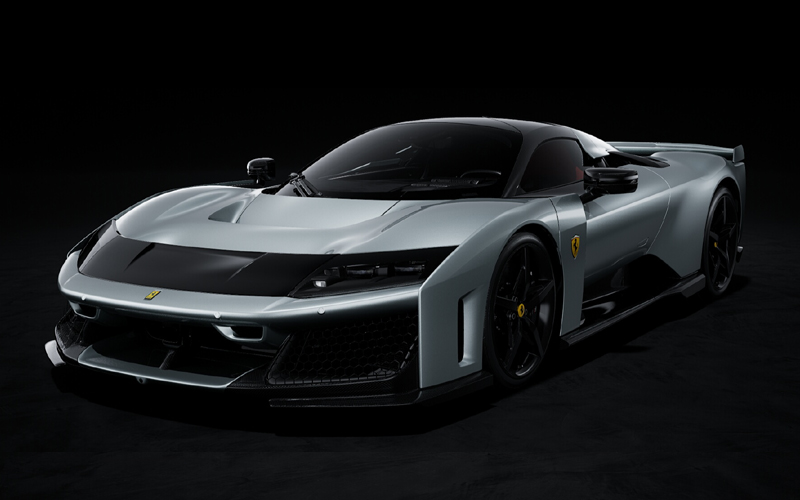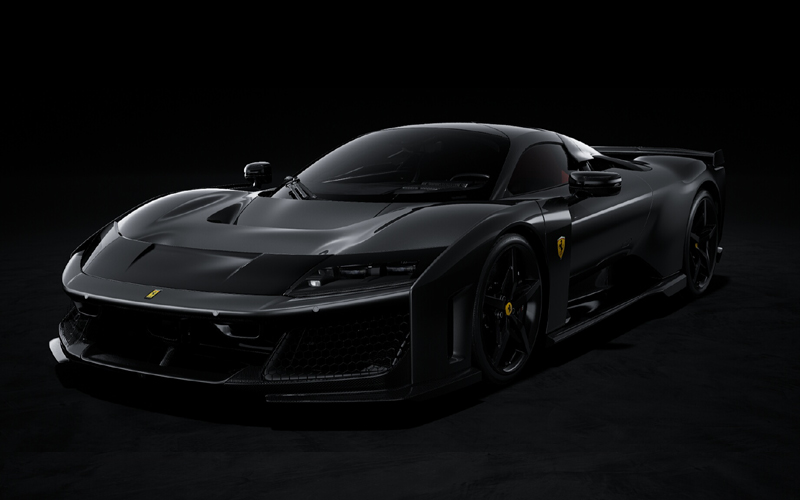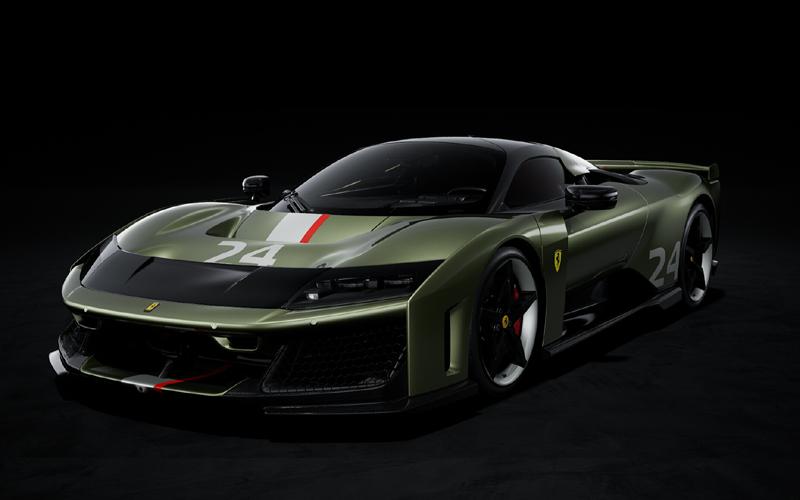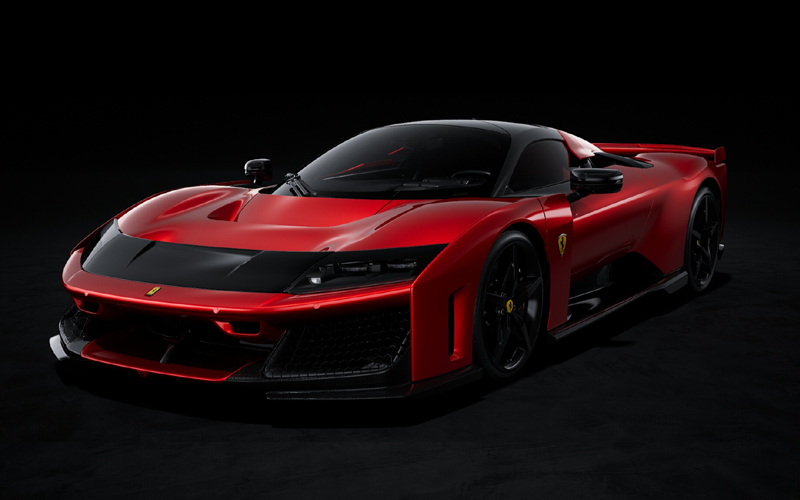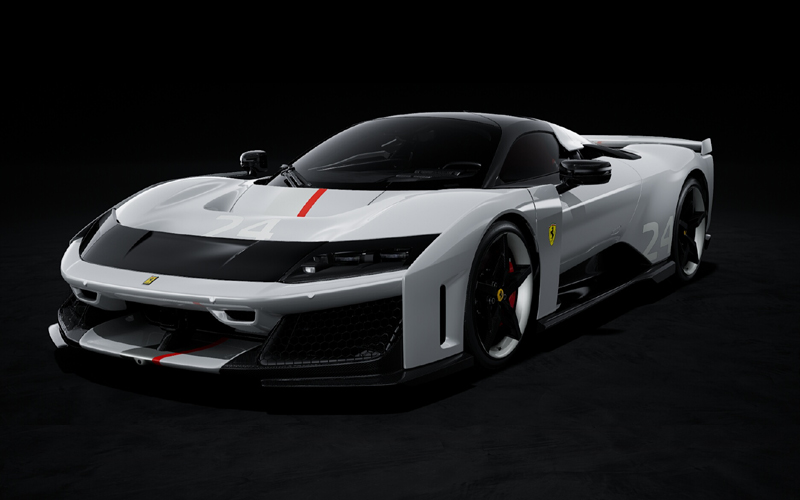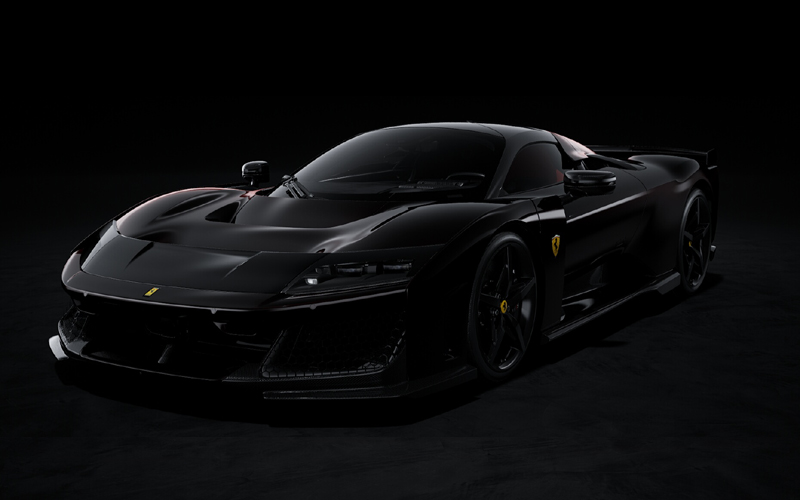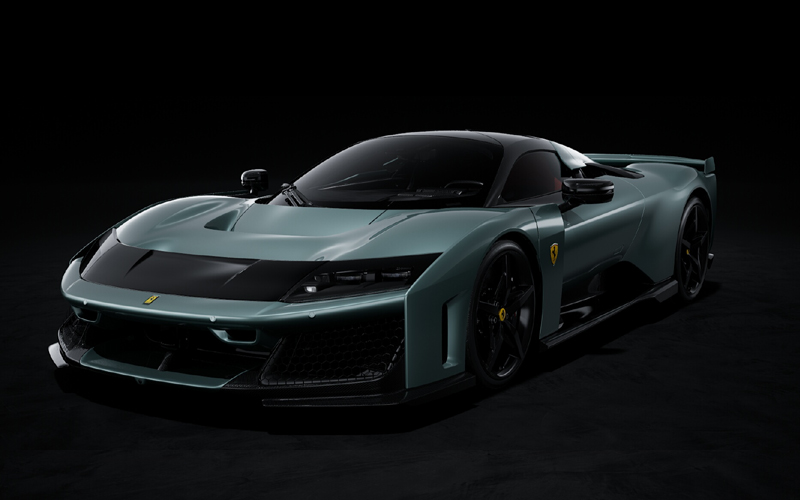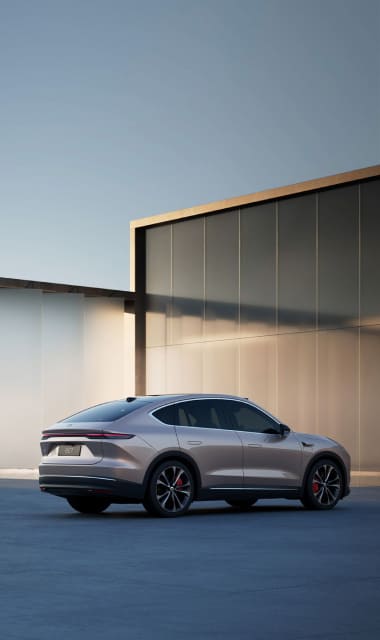Ferrari F80
Description
Ferrari F80: the New Supercar from the Prancing Horse
The Ferrari F80 opens a new chapter in the history of legendary supercars bearing the Prancing Horse badge. The F80 will be produced in a limited run of just 799 examples and joins icons such as the GTO, F40 and LaFerrari in showcasing the best that the Maranello-based marque has achieved in terms of technology and performance.
Car overview
Car overview
Petrol
2
2 Persons
Automatic
350 km/h
2992 cc
Video
Ferrari F80: the New Supercar from the Prancing Horse
Features
Features
Engine Type - V6 – 120° – dry sump
Bore and stroke - 88 mm x 82 mm
Max. power* - 900 cv at 8750 rpm
Max. torque - 850 Nm at 5550 rpm
Max. engine speed - 9000 rpm
Specific power output - 300 cv/l
Compression ratio - 9.5:1
Operating voltage - 650 – 860 V
Peak torque - 45 Nm
Maximum engine speed - 30,000 rpm
Operating voltage - 650 – 860 V
Tyres - Front - 285/30 R20
Brakes - Front - 408 x 220 x 38 mm (6 pistons per calliper)
Tyres - Rear - 345/30 R21
Brakes - Rear - 390 x 263 x 32 mm (4 pistons per calliper)
Fuel tank capacity - 63.5 litres
Weight distribution - 42.2 % front / 57.8 % rear
Dry weight - 1525 kg
Technical
In addition to this is a further 300 hp produced by the hybrid system, consisting of the e-4WD electric front axle and MGU-K electric motor. The link with motorsports plays an essential role: the architecture of this engine and many of its components are closely derived from the powerplant of the 499P which won the last two editions of the prestigious 24 Hours of Le Mans of the WEC World Endurance Championship.
The concepts of the MGU-K (which has given shape to an industrially manufacturable electric motor similar to the unit used in Ferrari F1 cars) and the MGU-H (with e-turbo technology developed specifically for this application used to generate electric power from excess kinetic energy recovered from the turbochargers) were both carried over from Formula 1 race cars.
E-turbo technology makes it possible to use larger turbochargers, for maximised performance at mid to high engine speeds, by using electric machines integrated in the turbochargers themselves to negate turbo lag at low engine speeds. The MGU-H system also allowed the use of dynamic map calibrations, which benefit from the fact that knock and compressor surge condition limits are different in dynamic and stationary conditions.
The F80 takes aerodynamic performance to levels never seen before on a road-going Ferrari: with 1050 kg of downforce generated at 250 km/h by the combined action of the huge active rear wing, extractor, underfloor and front section, the latter producing 460 kg of downforce on its own at 250 km/h with solutions, namely the S-Duct and triplane wing, inspired by motorsports.
The active wing, the most visually distinctive aero feature of the new supercar from Maranello, features an actuator system that not only adjusts height but also controls angle of attack continuously and dynamically, for precisely modulable downforce and drag.
Styling
The Ferrari F80 reconciles the functional needs of performance and high technology in an all-new design language which is nonetheless steeped in Ferrari DNA. The result of the work by the team at the Ferrari Styling Centre headed by Flavio Manzoni is a car with a modern and innovative visual identity which, while capable of accommodating a passenger without sacrificing comfort, offers the uncompromised experience of single seater.
With bold references to aerospace, the design for the F80 was guided by a futuristic approach, and features an architecture defined by a dihedral cross section with its two bottom corners firmly planted on the wheels.
In the side view, the rear section has a sculpted flow that emphasises the muscularity of the entire rear wing.
At the front, an upright panel feature standing proud from the door acts as an extension to the wheel arch, paying homage to the visual language of the F40.
Esterior
Rising out from the volumes of the lower body is the cabin, a floating bubble structure of unexpected volumes, and the product of an exacting study in architecture and proportion.
A whole 50 mm lower than the greenhouse of the LaFerrari, the cab has a significant effect on the perception of volume, broadening the shoulders of the car to give the cockpit an even more compact look.
With the rear spoiler raised, the car expresses even more power and dynamism as the difference in visual balance between the two configurations reveals the other side of its character.
The functional needs of the car have been resolved visually in the design to create the perfect dialogue between performance and form.
Interior
Like the exterior, the interior design of the F80 makes no secret of the inspiration it draws from the world of motorsports, and from Formula 1 race cars in particular.
A project involving designers, engineers, ergonomics specialists and Colour & Trim experts working in concert culminated in an original new solution that sets the driver unequivocally as the protagonist in the cabin and transforms the car into a “1+”.
The cockpit is centred entirely around the driver, enveloping them completely, and even the forms of the dashboard are oriented towards the driver side. The passenger, on the other hand, has a fixed seat integrated perfectly into the trim of the cabin.
The F80 features a completely new steering wheel: around 14 mm smaller in diameter than its predecessor, the new wheel has flattened top and bottom rims, and a boss measuring 70 mm less in height to improve visibility and accentuate the sense of sportiness when driving.
The lateral zones of the rim are optimised to ensure a better grip with or without gloves. The physical buttons on the right and left hand spokes of the steering wheel make a return here, replacing the full-digital layout used by Ferrari in recent years with a solution with easier to use buttons that can be instantly identified by touch. This change will also be extended to other road-going Ferraris in future.
Powertrain
The carry-over from racing also includes technology from Formula 1, from which the concepts of the MGU-K and the MGU-H (with a bespoke e-turbo application) have been borrowed. It was also decided to tilt the engine-transmission unit down by 1.3° in the Z axis, to lower the centre of gravity without compromising the efficacy of the aerodynamic underfloor. This lowered installation position was permitted by the new smaller diameter flywheel.
Architecture
The tub and other elements of the chassis of the F80 were developed using a multi-material approach, where the best suited material for the task is used for each individual zone. The cell and roof are made of carbon fibre and other composites, while the front and rear subframes are made of aluminium and are fastened to the tub with titanium screws. At the rear there is an additional aluminium subframe, fastened to the main rear subframe with screws, for carrying the battery.
The system features completely independent suspension actuated by four 48V electric motors, a double wishbone suspension layout, active inboard dampers and suspension arms created with 3D printing and additive manufacturing technology. This solution offers a number of advantages, such as an optimised layout, better corner control, reduced unsprung mass, no requirement for an anti-roll bar and the introduction of a dedicated camber angle correction function.
Another major evolution introduced by the F80 is the new SSC 9.0 (Side Slip Control) system, which now benefits from the integrated FIVE (Ferrari Integrated Vehicle Estimator) function. The new estimator is based on the concept of the digital twin, a mathematical model that uses the parameters acquired by sensors installed on the car to replicate its behaviour virtually.

